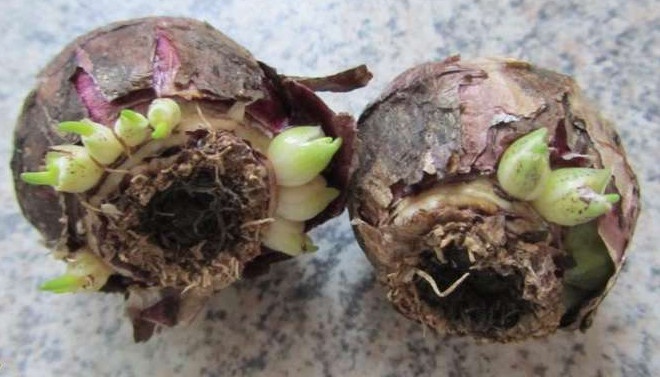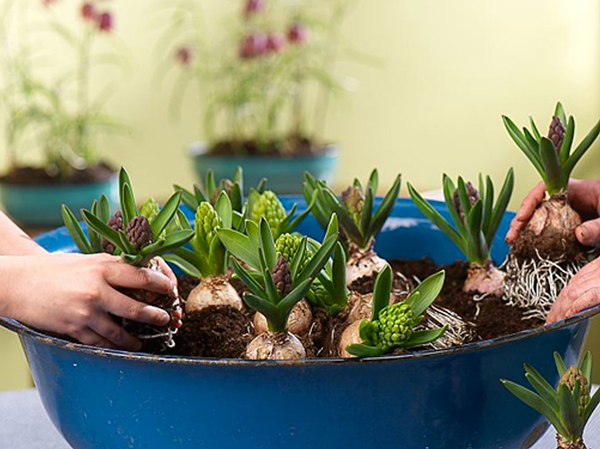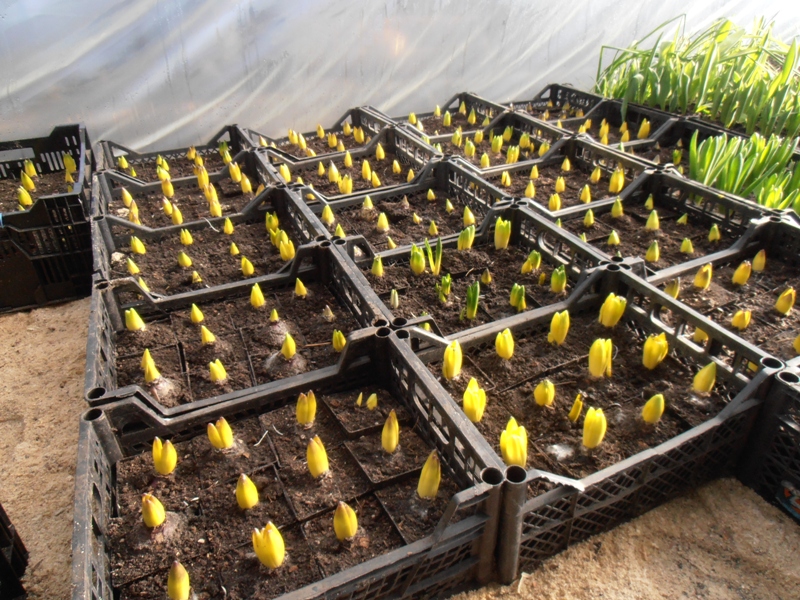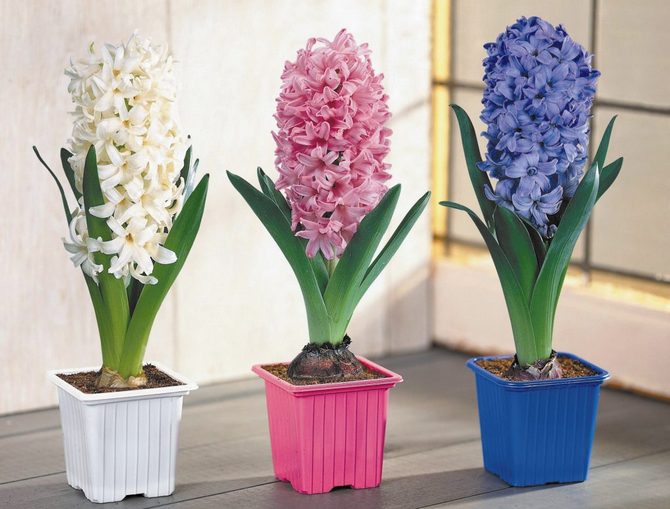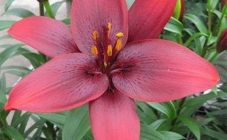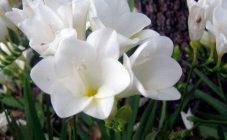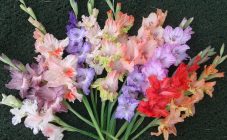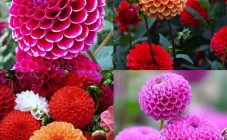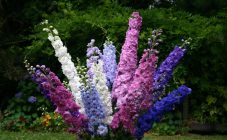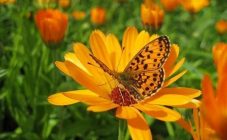Content:
In late April - early May, beautiful flowers with large inflorescences appear on the flower beds. These are hyacinths. In the flowerbed, they go well with other primroses. Plants are grown in white, red, blue, yellow, blue and purple. Planting and caring for hyacinths is not particularly difficult.
Reproduction of hyacinths
Hyacinth is a bulbous plant of the Asparagus family. How and in what ways do hyacinths reproduce?
Propagation with a bulb
Babies or small bulbs are grown naturally (several young ones appear over time around the uterine bulb) or artificially stimulate their growth. Then the finished planting material is planted directly on the site.
If you wait for babies to appear around the parent bulb in the usual way, it will take a long time, since up to 3 babies can appear a year. Therefore, in order to obtain a sufficient amount of high-quality planting material, additional stimulation of the mother liquor is carried out.
A large and healthy bulb is selected as a mother liquor. It is pre-washed and dried under a canopy. In damp weather, drying is carried out in a well-ventilated area. A week later, with a sharp knife, or better with an old teaspoon with sharpened edges, a cone-shaped hole is cut in the bulb from the side of the roots.
To prevent decay, the cut part is treated with a fungicide or sprinkled with charcoal, which is previously pounded into crumb. Instead of charcoal, you can take activated carbon tablets.
Next, the bulbs are placed on the net with the hole up and kept warm at a temperature of 21 ° C to 30 ° C. This will reduce the risk of uterine bulb disease and will also promote the formation of callus (new tissue in the cut area).
After 2-3 months, babies will form at the cut sites.
Now the uterine bulb must be planted in the prepared soil with a cut up. Daughter bulbs are lightly sprinkled with earth. For the winter, the planting is covered with mulch.
Spring is the time for the awakening of young bulbs. Carefully, so as not to damage the delicate leaves, remove the mulch, loosen the soil and feed it with nitrogen fertilizers. During the growing season, plant care consists in loosening, watering and removing weeds from the site.
After the leaves have dried, new plants are dug up and planted in their permanent places. After 3-4 years, hyacinths throw out peduncles, and from this moment the flowering of young plants begins.
The method based on cutting the bottom allows up to 40 bulbs to be produced in one year.
Instead of cutting out part of the bulb, you can make a cruciform incision in the root area, which is also treated with fungicide or charcoal.
After that, the mother liquor is placed in a warm place so that the cut site dries up and opens up.
Further, the cultivation of seedlings is carried out similarly to the above method. However, in this way you can get fewer bulbs (up to 15) than cutting out the bottom.
Reproduction by scales
They are also treated with fungicide or charcoal. Moistened perlite, river sand or a mixture of peat and coarse sand is poured into a plastic bag. The treated flakes are placed in this substrate. The plastic bag is inflated and tied.
Place the finished packages in a well-ventilated area for 2-3 months. New bulbs form at the base of the scale. After the appearance of small bulbs, the scales are removed from the bag and planted in a seedling box or pot for growing. The top of the flake should be above the substrate. The soil is lightly watered, and the boxes are placed in a warm (not lower than 21 ° C) illuminated place.
When young plants have leaves, the boxes are taken out into the street and the young hyacinths are hardened. At the end of the growing season, when the leaves die off, they are dug up and transplanted to a permanent place.
Breeding with leaf cuttings
For this, adults, already flowering plants are used.
Leaves located at the base of the flower are used as cuttings. They are broken off and treated with a growth stimulant such as heteroauxin. Then the cuttings are planted at an angle in boxes filled with sand to a depth of about 3 cm. To preserve the microclimate, the planting is covered with a plastic bag and placed in a cool room (t "10-15 ° C). The plant will grow for 2 months, until a small leaf and roots appear. After that, the plant is ready for transplanting to a permanent place.
How to grow hyacinth from seeds
Hyacinths can be grown not only with bulbs or green cuttings, but also with seeds. This method is used when breeding new varieties of flowers, since in this case the flowering period occurs only at 7-8 years.
When the seed pods turn light yellow, they are collected and laid out in the shade, where they dry and ripen.
After about a week, the capsules open, and seeds spill out of them. They are collected, cleaned of debris, dried and put into bags.
Sowing on the beds is performed in the fall. If sown in spring or summer, hyacinths will germinate only the next year.
The seeds are sown densely in the beds, 1.5-2.0 cm deep. A layer of sand is first poured onto the bottom of the beds. The distance between the ridges is 6-8 cm.
Planting care consists in periodic watering, weeding and loosening the soil. During the growing season, you can feed young plants with mineral fertilizers. Top dressing is performed either after rain or after watering.
In the first year, the bulbs are not dug up, since they are still very small. After the second year of life, they are dug up annually for the summer and planted in the fall.
Hyacinth planting rules
For hyacinth plants, planting and care in the open field is easy and accessible even to beginners.
To get a beautiful flower, you must follow several planting rules:
- First, you need to use good quality seed. Buy firm, whole and healthy medium-sized bulbs for planting.
- Secondly, the best time of the year for planting is autumn, and the most optimal month for planting is September or October.
- Thirdly, hyacinths prefer lighted, windless places. The site for planting is dug in advance, mineral fertilizers and organic matter are applied. The quality of the flower depends on the composition of the soil. Neutral soils are best suited for the plant.
If the soil is acidic, then it is lime. In the case of choosing a site for planting with heavy soil, sand must be added to it. Also, there should be no stagnant water. If flooding is possible, then drainage is performed.
- Fourthly, the bulbs must be disinfected before planting.For this, the planting material is placed in a weak solution of manganese for 30 minutes.
- Fifthly, sand is first poured into the hole, with a layer of at least 5 cm. The bulb is pressed into the sand and is first covered with a layer of sand on top, and then with soil. For the development of young plants, you need to provide them with a sufficient amount of nutrients. Therefore, organic fertilizers, wood ash, superphosphate and potassium sulfate are introduced into the hole.
- Sixth, planting should be done to a depth of about 10-20 cm. The depth depends on the size of the bulb. The larger it is, the deeper you need to plant. Planting depth should be 3 times the size of the bulb. The distance between plants in a row is 10-15 cm, between rows is 20 cm.
Flower care
Hyacinth in the garden
Usually the plant is grown in the yard in a flowerbed, so first we will consider how to grow and care for hyacinths outdoors.
Plants are quite demanding on the structure of the soil and develop well on light soils, so the ground around them must be periodically loosened.
Watering should not be excessive. The main thing is that the ground around the plants does not dry out. During the budding and flowering period, watering is increased.
Hyacinths are taken care of in early spring. March is the time for removing residual mulch and loosening the soil. When the leaves appear, it is time for nitrogen fertilization.
After the inflorescence withers, the peduncles are removed in such a way as not to affect the leaves. To remove leaves, the condition must be met - their complete natural wilting.
After the growing season of the plant is completed, the bulbs are dug up, sorted, rotten and damaged bulbs are removed. Then they are dried and placed in boxes for storage until autumn disembarkation.
How to grow indoor hyacinth
Hyacinth can be grown not only in the open field, but also at home. For planting, a neutral soil is prepared, which is poured into flower pots. The dug out and dried onions are placed in a cool place for 10-12 weeks at a temperature of + 5-7 ° C. A refrigerator is perfect for this.
Then they are placed in prepared pots. Landing is performed in such a way that its upper part is located above the ground. After that, the soil is watered, and the pot is placed in a dark, cool place. They are stored there until the time for distillation of flowers comes. Thus, for any holiday, you can independently grow homemade hyacinths and decorate the house with beautiful flowers.
After the flower in the pot has bloomed, the same bulbs can be used to grow hyacinths outdoors. After two seasons, they can be used again for forcing at home.
Flower agrotechnics in certain regions
Hyacinth cultivation is possible in the Urals, in the Moscow region and even in Siberia.
In the Moscow region, the Leningrad region and the Urals, hyacinths are planted in the ground from mid-September to early October. The planting time is influenced by the fact that the bulbs need 3 weeks to grow the roots. If the flower has time to take root, then frost is not so dangerous for it.
When planting under film or mulch, the planting period can be extended until the end of October.
In Siberia, planting is performed in early September. However, with the onset of frost, it is necessary to cover the planting.
The rest of the planting and care rules are the same as when growing in warmer regions.
Compliance with the rules of planting and caring for plants will allow you to get a beautiful, fragrant flower bed in spring, which will decorate the yard.
